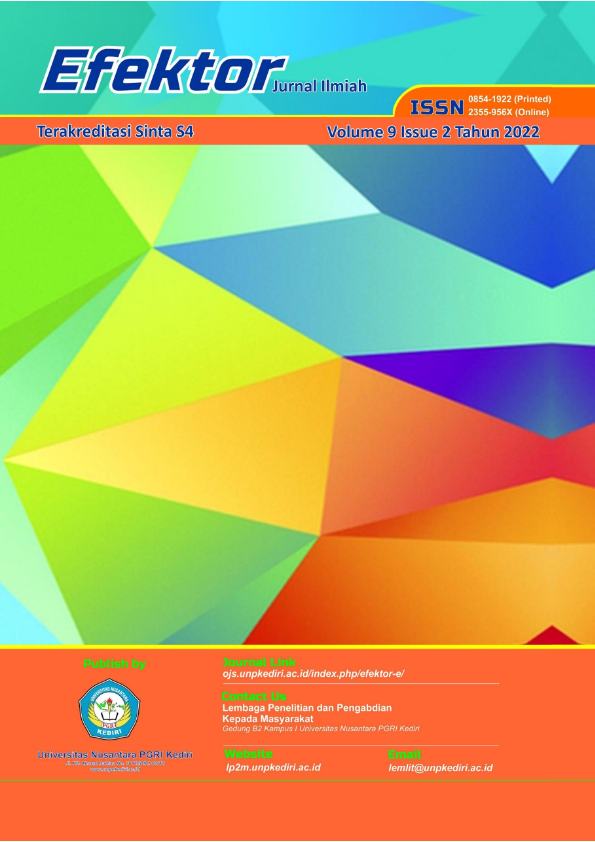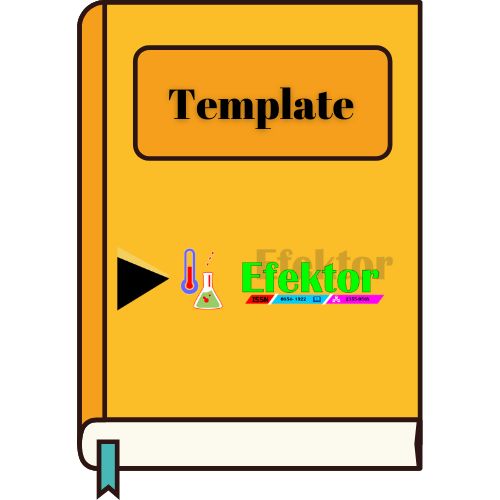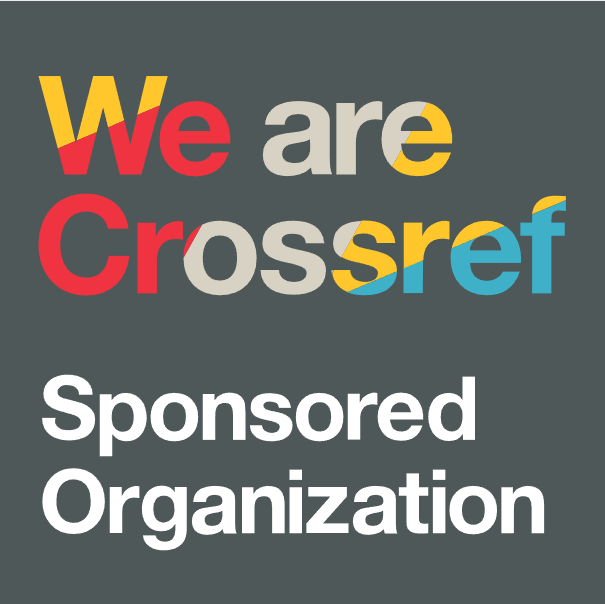Pengembangan Kemampuan Membaca Melalui Media Buku Alfabet Pada Anak Usia 5-6 Tahun TK Pertiwi 2 Kaloran Kabupaten Nganjuk
DOI:
https://doi.org/10.29407/e.v9i2.18117Keywords:
Early Childhood, Language, Reading, EducationAbstract
Early childhood is children aged 0-6 years, where it is often called as the golden age. The development and growth of children will be very rapid in this age. This development occurs in the physical and psychological development of children. At the PAUD level, they will be given a stimulus of education based on their age. This educational stimulus is very useful to help developing their physical and spiritual growth and development. One of the stimuli that will be given is the language aspect. In the language aspect, they will be given a stimulus to develop the ability to communicate with other people or the interlocutor properly and correctly. Stimulating good communication skills is very important for them. In language aspect, not only the ability to communicate but the ability to read is also very important for them. This reading activity will be given to improvethe power of thinking and add insight into new knowledge in children. The low number of reading skills in group b children aged 5-6 years in TK Pertiwi 2 Kaloran is one of the problems that arise in teaching and learning activities. The low reading ability is caused by several factors. Starting from the use of learning media used is still too monotonous, less attractive to children. This is very interesting for researchers to make observation to help improving reading skills in children aged 5-6 years. This research uses the media of the alphabet book. This study uses the Classroom Action Research (CAR) method developed by Kemmis and Taggart, with the research stages of Planning, Acting, Observing, and Reflecting. This research was conducted in 2 cycles, namely, Cycle I and Cycle II with the research subjects are group b children aged 5-6 years consisting of 12 children, 5 boys and 7 girls in TK Pertiwi 2 Kaloran. From the data generated in Cycle I with the criteria of completeness of 16.7%. Furthermore, in Cycle II, the criteria for completeness were 91.7%. So it can be concluded that learning with media of the alphabet book can help to develop reading skills in children aged 5-6 years in TK Pertiwi 2 Kaloran.
References
Azhar Arsyad. 2002. Media Pembelajaran. Jakarta: PT. Raja Grafindo Persada.
Darmadi. 2018. Membaca Yuuk..! "Strategi Menumbuhkan Minat Baca Pada Anak Sejak Usia Dini. Bogor: Guepedia.
Kasim, Nurlaela Basir. 1987. Membaca 1. Jakarta: IKIP Jakarta.
Papalia, Old and Feldman. 2008. Human Development. Jakarta: Kencana Prenada.
Santrock, John W. 2017. Perkembangan Anak. Jakarta: Erlangga.
Suyanto, Slamet. 2005. “Dasar-Dasar Pendidikan Anak Usia Dini.” Yogyakarta: Hikayat Publishing.
Syam, Nurbaeti. 2020. “Peranan Media Alphabet Book Dalam Meningkatkan Kemampuan Mengenal Huruf Bagi Anak Usia Dini.” UIN Alanuddin Makassar.
Tampubolon. 1990. “Mengembangkan Minat Dan Kebiasaan Membaca Pada Anak.” Bandung: Angkasa.
Tarigan, H. G. 2008. Sebagai Suatu Keterampilan Berbahasa. Edisi Revisi. Bandung: Angkasa.
Wilson and Paters. 2006. Membaca Anak Usia Dini. Jakarta.
Wiryodijoyo, Suwaryono. 1989. Membaca:Strategi Pengantar Dan Tekniknya. Jakarta.
Downloads
Published
Issue
Section
License
Authors who publish with this journal agree to the following terms:
- Copyright on any article is retained by the author(s).
- The author grants the journal, the right of first publication with the work simultaneously licensed under a Creative Commons Attribution License that allows others to share the work with an acknowledgment of the work’s authorship and initial publication in this journal.
- Authors are able to enter into separate, additional contractual arrangements for the non-exclusive distribution of the journal’s published version of the work (e.g., post it to an institutional repository or publish it in a book), with an acknowledgment of its initial publication in this journal.
- Authors are permitted and encouraged to post their work online (e.g., in institutional repositories or on their website) prior to and during the submission process, as it can lead to productive exchanges, as well as earlier and greater citation of published work.
- The article and any associated published material is distributed under the Creative Commons Attribution-ShareAlike 4.0 International License













